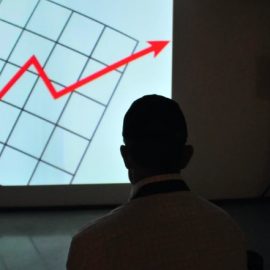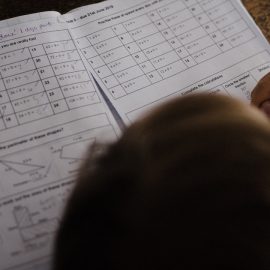

This article is an excerpt from the Shortform book guide to "Talking to Strangers" by Malcolm Gladwell. Shortform has the world's best summaries and analyses of books you should be reading.
Like this article? Sign up for a free trial here .
Who was Patrick Dale Walker? Why was he let out on bail? How could such atrocities be prevented in the future?
Patrick Dale Walker was a Texan who was arrested for attempting to murder his girlfriend. Even though the crime was serious, the judge set his bail at $25,000 and let him go.
Find out what happened in the Patrick Dale Walker case and why it’s so easy for a judge to make a devastating mistake.
Patrick Dale Walker: The Problem with Judging a Book by Its Cover
The bail hearings described in the section Judges vs. Artificial Intelligence are another exercise in transparency. Judges who look at their defendants make more mistakes in judging character than a computer that never sees the defendants at all. Watching someone’s facial expressions is not a fail-proof way to see how that person is feeling. Someone who is surprised might not show it, and someone who is dangerous might come across as stereotypically demure.
A man named Patrick Dale Walker was arrested in Texas for trying to kill his girlfriend. The only reason he didn’t succeed in murdering her was that the gun jammed when he pulled the trigger. The judge presiding over the case set bail at $1 million, and Patrick Dale Walker went to prison. But four days later, the judge lowered the bail to $25,000 and Walker was released.
The judge reasoned that four days in jail would be enough for Patrick Dale Walker to “cool off.” He saw Walker as a polite young man with a clean record. Most important, he saw that Walker was remorseful for what he had done. But could he really see something like remorse in a stranger? Apparently not. Patrick Dale Walker shot his girlfriend to death four months later.
In this case, seeing Patrick Dale Walker made the judge worse at interpreting his intentions. The information the judge thought he gleaned from observing Walker’s seemingly remorseful behavior was actually misinformation, because Walker was not transparent.
Judges Vs. Artificial Intelligence
Could the murder of Patrick Dale Walker’s girlfriend have been prevented by the use of a computer rather than a judge?
On a typical Thursday in Brooklyn, Judge Solomon was presiding over his courtroom. His primary responsibility for the day was arraignments. He had to see every defendant who had been arrested in the last 24 hours, look at their criminal history, listen to the testimony of both the prosecution and the defense, and then decide if the defendant would be offered bail and the chance to be released from custody. In short, Judge Solomon had to look a perfect stranger in the eye, assess his character, and decide if he deserved his freedom. But does looking a person in the eye actually help you judge his nature? This was the problem in the Patrick Dale Walker case.
A team from the University of Chicago, led by Sendhil Mullainathan, set out to answer that question. The experiment went like this:
- Mullainathan gathered the data of all 554,689 defendants that went through the NYC courts from 2008-2013. They found that 400,000 of those defendants had been released by the judges that presided over their arraignments.
- Mullainathan built a computer with an artificial intelligence system.
- The computer was fed the data of the same 554,689 cases. It then made its own list of the 400,000 defendants least likely to commit a crime while out on bail.
The Results
- The defendants chosen by the computer were 25% less likely to commit a crime while waiting for trial than the defendants released by human judges, like Patrick Dale Walker.
- The computer flagged 1% of the defendants as “high risk,” not suited to be released. The human judges presiding over those cases released nearly half of that 1% high-risk subgroup.
- The defendants selected by the human judges as “high risk” were not consistent with the computer—in fact, they were from all different groups of risk likelihood, as predicted by the computer.
Translating the Results
The computer was much better than human judges at determining a defendant’s likelihood of committing another crime. The study found that judges were not only setting their standards for release too low, but they were also actually mis-ranking many defendants completely. This was the problem with the bail judgment of Patrick Dale Walker.
It is important to note that the human judges that presided over these cases had three resources available to them when making their bail decision:
- The defendant’s record
- The testimony of the attorneys
- The judge’s own personal observations of the defendant standing before him.
Mullainthain’s computer only had one of these three resources—the record of each defendant. Yet the machine still beat human judges when it came to making bail decisions. Why is it that meeting a defendant actually made the judge less likely to be able to gauge his trustworthiness?
What Is the Solution?
It’s clear from the Patrick Dale Walker story that looking at a stranger and assuming transparency has negative consequences. But what do we do with that information? Should judges have to sit behind a curtain when hearing their cases? That might make a certain part of the decision-making process easier, but it would also take away the humanity of the defendant. A judge needs to see the human whose freedom is on the line.
Transparency, just like truth default, is a flawed strategy for dealing with strangers. However, it is a necessary strategy. Humanity would suffer if every social interaction was mistrusting and anonymous because social coordination is a necessary part of the human experience. So, in an effort to keep our humanity, we make ourselves vulnerable to deception. That is the confusing paradox of dealing with strangers—we need to communicate, but we’re terrible at it.

———End of Preview———
Like what you just read? Read the rest of the world's best book summary and analysis of Malcolm Gladwell's "Talking to Strangers" at Shortform .
Here's what you'll find in our full Talking to Strangers summary :
- Why we don't understand strangers
- How to talk to strangers in a cautious way so you don't get fooled
- How Hitler deceived so many world leaders






